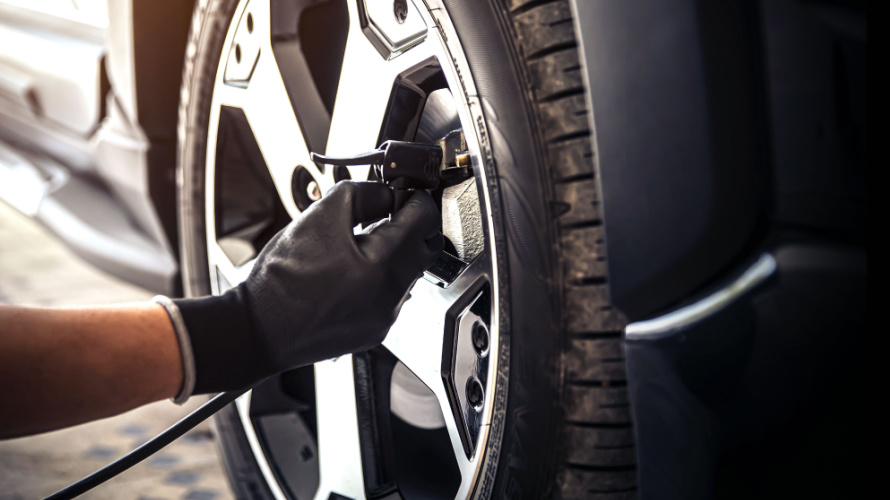Journey With Confidence: The Ultimate Tire Pressure Guide By TIRECRAFT
November 13, 2023
Tires

Tire Pressure–Why Does It Matter?
If you’re driving and one of your tires suffers a puncture, you might want to try to drive to a TIRECRAFT location near you to change your tire. However, doing this risks damaging the rim of the wheel. You might have to replace your wheel if you do this, and that’s much more expensive than replacing a tire. Flat tires don’t provide the traction you need, so driving on one is a major safety hazard.
That’s an extreme scenario. A bad puncture can leak a tire of all its air in a matter of minutes, and then you’re just driving on a loop of rubber. The air within your tires is a key component and without the right amount of air, you can reduce your mileage, the longevity of your vehicle, and the level of safety for you and others on the road.
The Benefits Of Pressurizing Your Tires Properly
We typically measure tire pressure in pounds per square inch, or PSI. This is the level of pressure inside your tire. Inflating your tires to the correct PSI provides several benefits. Here are some of the key advantages:
Improved Safety
Nothing is more important than safety and properly inflated tires are a major factor. With tires inflated to the correct PSI, you’ll experience better traction, handling, and overall vehicle stability, reducing the risk of collisions.
Better Performance
The right tire pressure ensures optimal vehicle performance, including fuel efficiency, braking, and overall drivability. This saves you money on fuel, increases safety, and can heighten your enjoyment while driving.
Increased Tire Longevity
Inflating your tires to the correct PSI helps disperse your vehicle’s weight across each tire. This avoids uneven tire wear, extending the lifespan of your tires.
Improved Fuel Efficiency
Under-inflated tires can increase rolling resistance, which leads to decreased fuel efficiency. Keeping your tires at the recommended PSI helps improve your mileage. This means you spend less money on gas and it reduces your emissions, which is better for everybody.
How Do You Know Your Tires Are Inflated To The Correct PSI?
It’s important that your tires are inflated properly. How do you know, though? How can you check? Here is TIRECRAFT’s tire pressure guide:
1. Get a tire pressure gauge.
Anytime you’re curious about your PSI, you can always visit a TIRECRAFT location and we can check them for you. If you’d prefer to do it yourself, it is important to purchase a high-quality tire pressure gauge. Tire gauges are relatively inexpensive and you can buy them at most automotive stores, hardware stores, and even gas stations.
2. Check your recommended PSI.
Your vehicle’s owner’s manual should include a recommended tire pressure. There may even be a sticker somewhere on your vehicle or inside your glove compartment stating the recommended PSI.
3. Remove the valve cap.
Unscrew the valve cap on your tire’s valve stem. Please note you should always check your pressure before you drive. Tires heat up from friction as you drive and this can give inaccurate gauge readings.
4. Press the tire pressure gauge onto the valve stem.
You should hear a hiss as air flows into the gauge.
5. Check the reading.
The gauge will display the current tire pressure.
6. Repeat for each tire.
It’s important to check the pressure in all four tires, as they may vary. If you have a spare tire, it’s worth checking its PSI, too.
7. Fill or release air as needed.
If the pressure in your tires is too low, use an air compressor to add air until it reaches the recommended PSI. If the pressure is too high, release some air by pressing the centre pin in the valve stem until you achieve the correct pressure.
8. Replace the valve cap.
It’s important to remember to screw the valve caps back on when you’re done to protect the valve stem from dust and debris.
Contact TIRECRAFT For Expert Tire Advice Today!
At TIRECRAFT, we can help you figure out the best PSI for your tires if you are unsure. We will inflate them for you, and provide any other service you need, such as a tire balancing or tire rotation. To learn more, please contact your local TIRECRAFT location today.
Back

